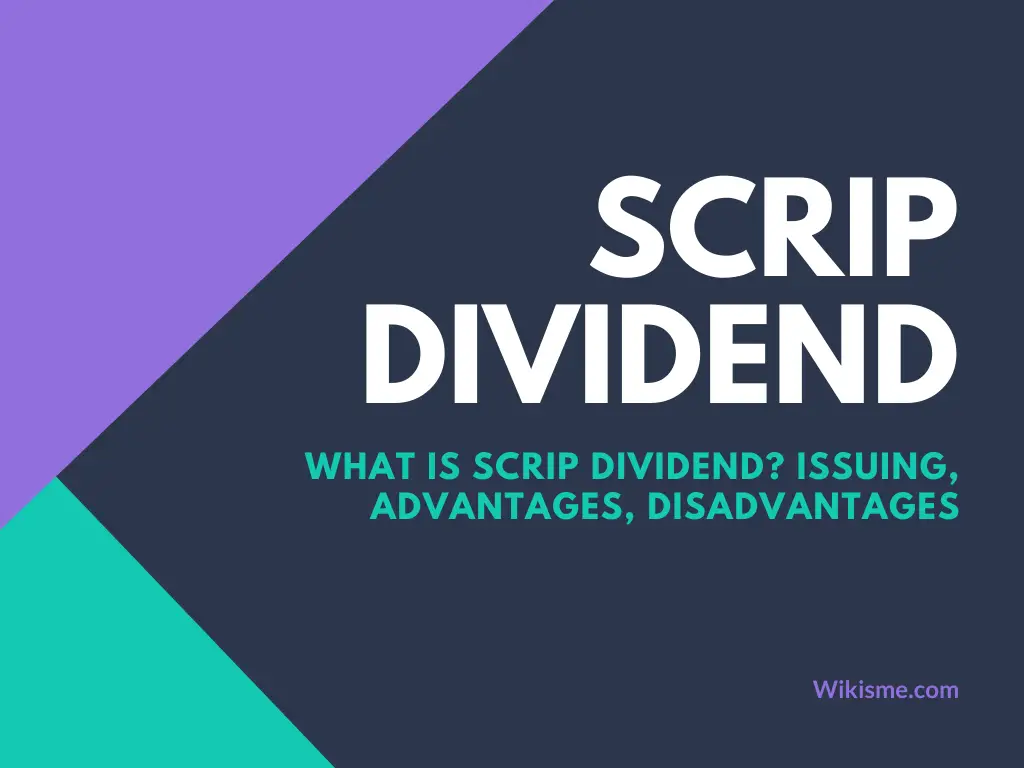A scrip dividend provides shareholders with the option of receiving a cash dividend or common stock. When a company issues a scrip dividend, it allows shareholders to increase its holdings’ size without incurring any fees.
Scrip dividends may be used when issuers have too little cash available for paying a cash dividend, but still wants to pay their shareholders in some manner. Scrip dividends are generally paid as an alternative to cash dividends.
Generally, a company will pay one new share for a certain number of existing shares. For example, 1 new share for every 10 shares held.
This would be called a 1 for 10 scrip dividend. It is a secondary issue and could also be well described as a way for a company to capitalize on financial reserves.
In scrip dividend company issues promissory notes to the shareholders of the company. A scrip dividend has shorter maturity periods and may not bear any interest.

Steps of issuing Scrip Dividend
- First of all, the board of directors will propose a scrip dividend.
- Then the proposed dividend will be approved by a shareholder in the annual general meeting, then it can be given to shareholders. Shareholders can modify the proposal given by the board of directors at the AGM.
- Then the date will be finalized at the AGM.
- The scrip dividend will be issued to only those shareholders who will hold shares as on record date or whose name will appear on the company’s share register.
- Then the company will finalize the reference price, which is generally five days average of the stock’s closing price.
- Then the company will issue shares to shareholders as scrip dividends.
Advantages of Scrip Dividend
- The company does not need to pay cash immediately or later if shareholders are willing to take shares and the company can use the cash for capital investment. The company may retain cash for financing its projects without restoring external borrowing.
- Shareholders can increase the shareholding without any additional transaction costs.
- Scrip issue increases a company’s total share capital. It gives additional shares to the existing shareholders thereby retaining proportional ownership.
- If the dividend is in the form of a share, shareholders can take advantage of the tax.
- Scrip dividends can give a company extra time, which is the difference between the dividend declaration date and payments date.
Disadvantages of Scrip Dividend
- Investors and other stakeholders may think the company has a cash flow issue.
- As in this dividend, shareholders don’t receive cash, they have to sell some shares when they are required to pay tax on dividends.
- The company has to pay an excess dividend compared to the dividend declared if the share price increases.
- Shareholders’ wealth will not increase because earnings per share and share price will decrease after the scrip dividend issue.
- When the position of the company is not sound it gives shareholders a promise to pay a dividend at a future date and the scrip dividend is in the form of a promissory note which creates pressure on the company.
3 Reasons for Investors to Go for Scrip Dividend
- Reinvesting dividends at a reasonable price: Scrip dividends are usually offered at a discount to the market price. By opting for scrip dividends shareholders get more shares than if they used a cash dividend to buy shares at a market price.
- No additional cost: Unlike using cash to purchase new shares there are no additional costs when a scrip dividend is received. Shareholders who opt for scrip dividends can save over the long term as brokerage and trading fees are not incurred.
- Enjoying the Compounding effects: Compounding is the method of generating more returns on reinvested earnings. Scrip dividends are a perfect way for investors to compound their investments at a minimal cost.
Conclusion
In the end, the Scrip dividend is issued in such a situation that the company wants to issue a dividend.
Still, the company does not have the available cash to make the issue of a dividend or wants to invest the available cash into the growth of the business or any other purpose.
But at the same time scrip dividend gives a negative impression about the company to the market that the company’s financial condition may not be so good.
So investors may feel their money gets blocked and may not want to invest in the company.
